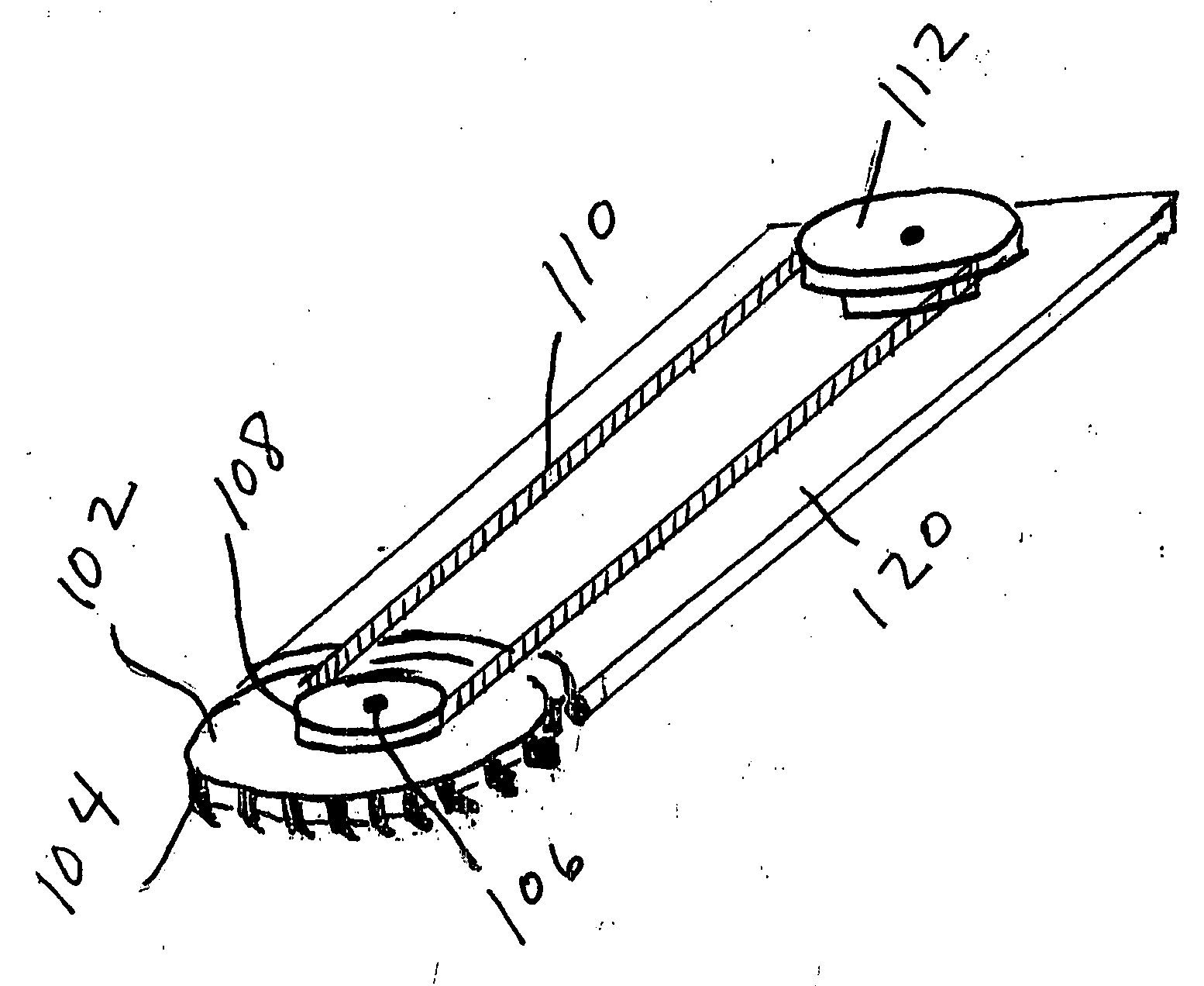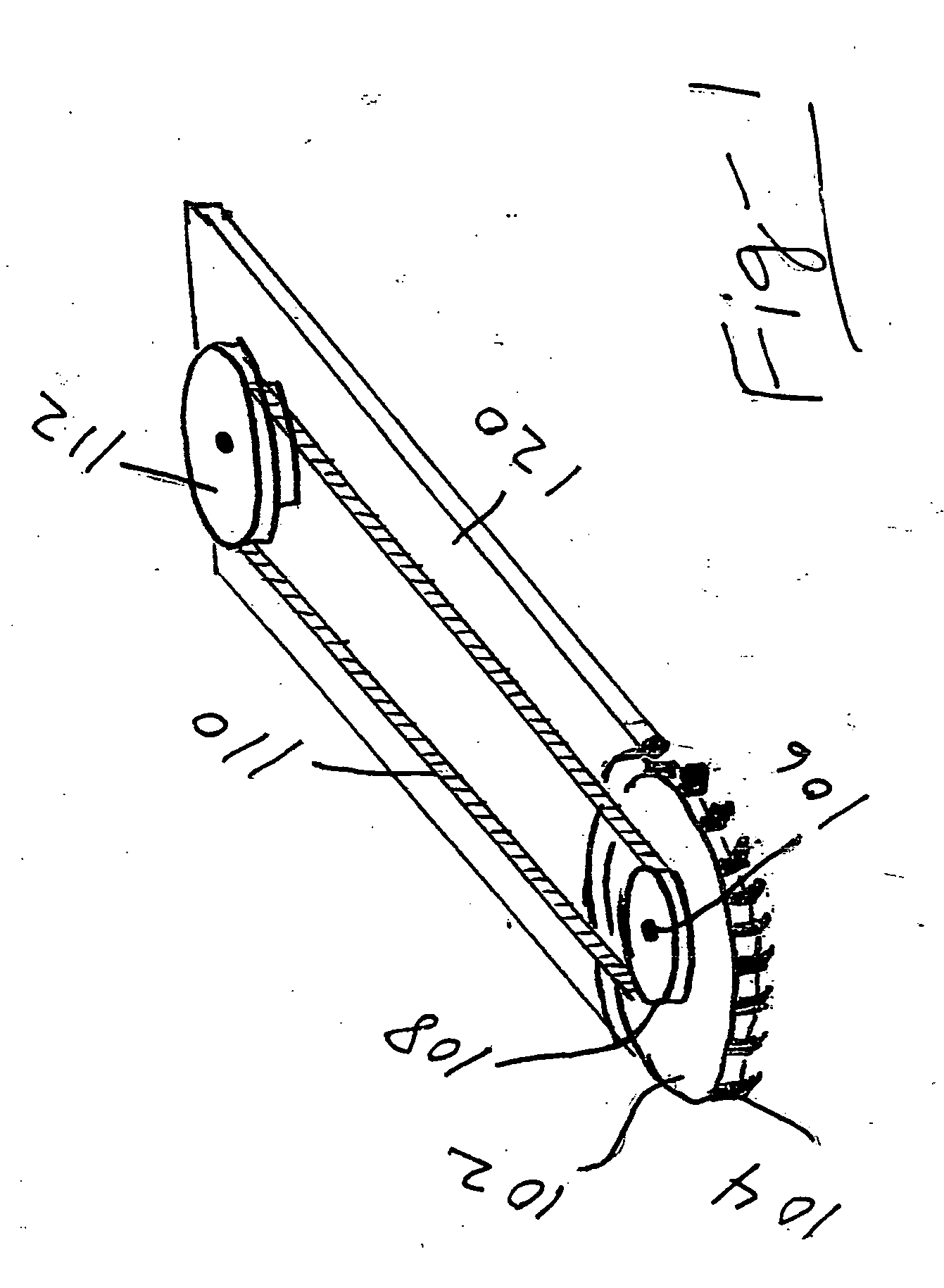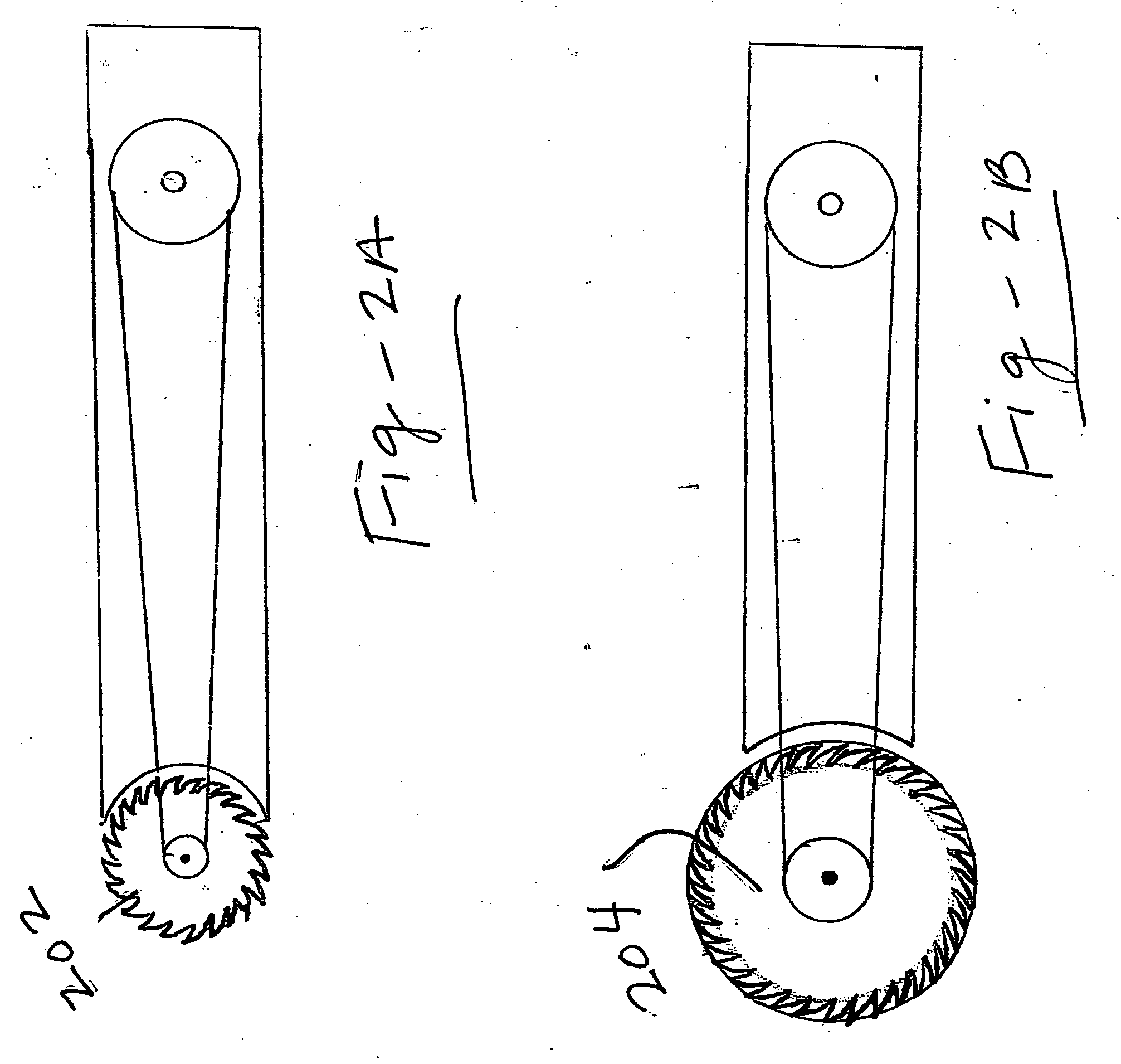Bone-cutting circular saw
a circular saw and cutting blade technology, applied in the field of surgical saws, can solve the problems of requiring considerable manual force to cut hard materials, affecting the cutting accuracy of surgical blades, and inherently inefficient cutting tools of oscillating saws, so as to improve the precision of cutting bone, improve efficiency, and efficiently transmit power
- Summary
- Abstract
- Description
- Claims
- Application Information
AI Technical Summary
Benefits of technology
Problems solved by technology
Method used
Image
Examples
Embodiment Construction
[0019] Turning now to the figures, FIG. 1 is an oblique representation of a preferred embodiment of the invention, including a saw blade 102 having teeth 104 rotatable about an axis 106. A belt 110 is dressed around a raised circular boss 106 on the blade 102. The belt 110 is driven from a pulley 112, which in turn, is driven by a motor disposed in hand-held tool, illustrated in FIG. 3.
[0020] Although in the preferred embodiment the saw blade is belt-driven, other mechanisms may be used, including meshing gears, as well as direct drive to the teeth 104 of the blade 102. With respect to the teeth 104, any configuration suitable for bone cutting may be utilized, as the invention is not limited in this regard. For example, the teeth currently used on oscillating saws may be applicable, as well as other configurations known to those of skill in the art.
[0021] In terms of materials, the blade 102 and support 120 are made of any suitable durable and rigid material, such as metal. Nor is...
PUM
 Login to View More
Login to View More Abstract
Description
Claims
Application Information
 Login to View More
Login to View More - R&D
- Intellectual Property
- Life Sciences
- Materials
- Tech Scout
- Unparalleled Data Quality
- Higher Quality Content
- 60% Fewer Hallucinations
Browse by: Latest US Patents, China's latest patents, Technical Efficacy Thesaurus, Application Domain, Technology Topic, Popular Technical Reports.
© 2025 PatSnap. All rights reserved.Legal|Privacy policy|Modern Slavery Act Transparency Statement|Sitemap|About US| Contact US: help@patsnap.com



